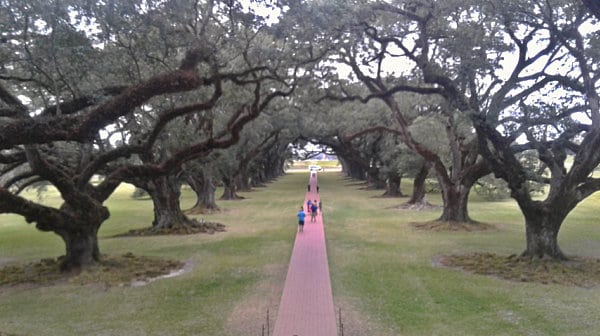A Grim Existence for Millions
Anxious to take advantage of our brief holiday, my friend and I set off to see some special sights. Very first on my list was a visit to two former sugarcane slave plantations, one hour from the city on the west bank of the Mississippi River: Oak Alley and Laura Plantations. Although Oak Alley is the more striking from a photographer’s point of view, the Laura Plantation offers more complete historical information.

The original owner of the Laura Plantation, Guillame Duparc, a French naval veteran of the American Revolutionary War, petitioned and received the land on the west bank of the Mississippi River from then-President Thomas Jefferson. He built his original plantation house in 1804, but died less than 3 years later. Over four generations, the family gradually acquired 12,000 acres on which they grew indigo, rice, pecans and sugar cane. Laura Lacoui, fourth generation owner, who was born in 1861, sold the plantation in 1891. We spent several hours touring the restored plantation house, its site and the existing slave cabins, and listening intently to the outstanding tour guide.

By the late 1850s Laura Plantation was a bustling, large-scale agricultural enterprise. Behind the plantation house, 186 slaves and 69 slave cabins were scattered along a 3.5 mile road. The clang of a giant bell before dawn signalled the start of each new day. Young children, awakened at 3:00 a.m. hauled the heavy pots of breakfast gruel to families from the communal kitchens scattered along the road connecting the cabins. The adults had to provide the other meals on their own as the plantation owner did not help. Each small two-room cabin contained two families and each family had a vegetable garden, chicken coop and/or pigpen. Water wells were scattered here and there along the road. The injured, sick, or dying were in the slave infirmary. The slave owner, on a whim, would shackle aggressive or disobedient upstarts in leg irons, handcuffs, and neck collars and would beat them, leaving them slumped on the ground under a huge oak tree. It was a grim existence for the slave families, but there was no escape. That was their fate and the only life they knew.

We came away horrified and mesmerized by a societal-sanctioned way of life that seemed so alien and unimaginable to us. This was not ancient history. The practice of enslaving millions of humans for profit and wealth went on for several hundred years and was widespread in the Southern United States as recently as 160 years ago. It was truly an eye-opening visit into Louisiana’s slave-owning past. It required a brutal Civil War to free its slaves and end this blight on humanity. But their plight is still ongoing. Louisiana has the highest incarceration rate of any state in the union. Currently more than 40,000 are behind bars. More than 90 per cent of them are black people. One in seven black men in New Orleans is in prison, on parole or probation. Our tour guide was scathingly critical of Louisiana’s prison system.





